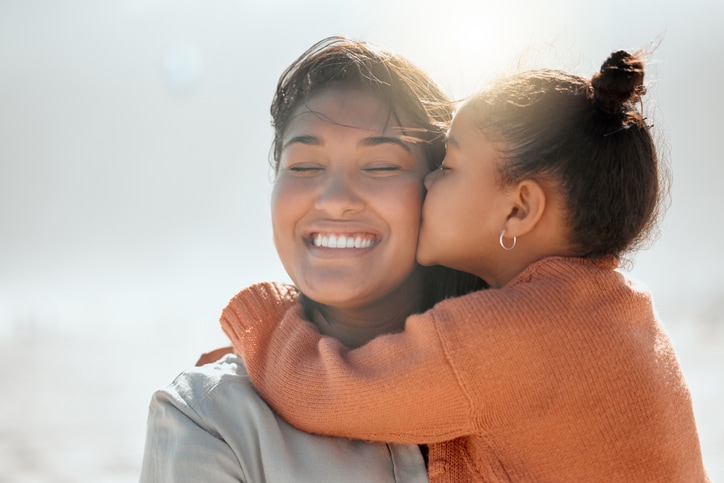The first time a child correctly utters “please” or “thank you” is often a proud moment for parents — but instilling heartfelt gratitude in kids goes beyond a simple lesson in being polite. It’s about helping to assign actual meaning to those words of thanks, as well as guiding kids to recognize both the kindness shown to them and how their actions make others feel.
Of course, truly grasping the difference between saying “thank you” and understanding this deep appreciation is something that does not happen overnight, as it takes a certain level of cognitive development, explains Michelle Tangeman, a southern California-based licensed marriage and family therapist, board certified behavior analyst, founder of Thriving Toddler and co-host of the Parenting Understood podcast.
“Gratitude can contribute to more positive and pro-social interactions in families, schools, communities and workplaces.”
—Michelle Tangeman, licensed marriage and family therapist
But that shouldn’t sway grown-ups from modeling gratitude and talking about thankfulness from very early on. “Gratitude can contribute to more positive and pro-social interactions in families, schools, communities and workplaces,” says Tangeman. “It’s not all rainbows and butterflies every day, but it’s more about, ‘Can I see the good in this moment right now?’” Plus, she adds, “Gratitude also replicates kind acts. So you’re more likely to do kind acts for other people and pay them forward.”
Here are 11 everyday ways and purposeful gratitude activities for kids — all suggested by experts and parents — to help children understand, embrace and express gratitude.
1. Model gratitude at home
“It’s important to show the people around us that we care for one another — whether it’s at home, in a classroom, in a family,” explains Christina Soriano, a Brooklyn, New York educator and mom of a 2 1/2-year-old, who has worked in various roles in the NYC public school system, including as a social emotional wellness teacher. “And it can start at any age.”
Grown-ups can model gratitude consistently by using:
- Everyday verbal prompts: This can be as simple, says Soriano, as: “Thank you for putting your socks in the laundry basket. You are helping by keeping things off the floor so no one slips.” Or: “Thank you for helping me clean up. It keeps our home clean.”
- Positive reinforcement: This includes expressing genuine gratitude through a hug and an explanation of why you are thankful for a child’s behavior, says Tangemen. For example, to acknowledge a child’s ability to self-regulate in a moment of frustration and anger, she has said, “I saw that you wanted to raise your hand to swat at me, but you didn’t, and I’m so thankful that you took the time just to stop and think about it. I’m really proud of you.”
- Playtime scenarios: Children learn through play, so Soriano suggests modeling gratitude in pretend situations. For example, if you are playing “birthday party,” make sure that each stuffie says thank you for the piece of cake or a gift — and discuss how it feels when someone thinks of them.
2. Create a kindness jar
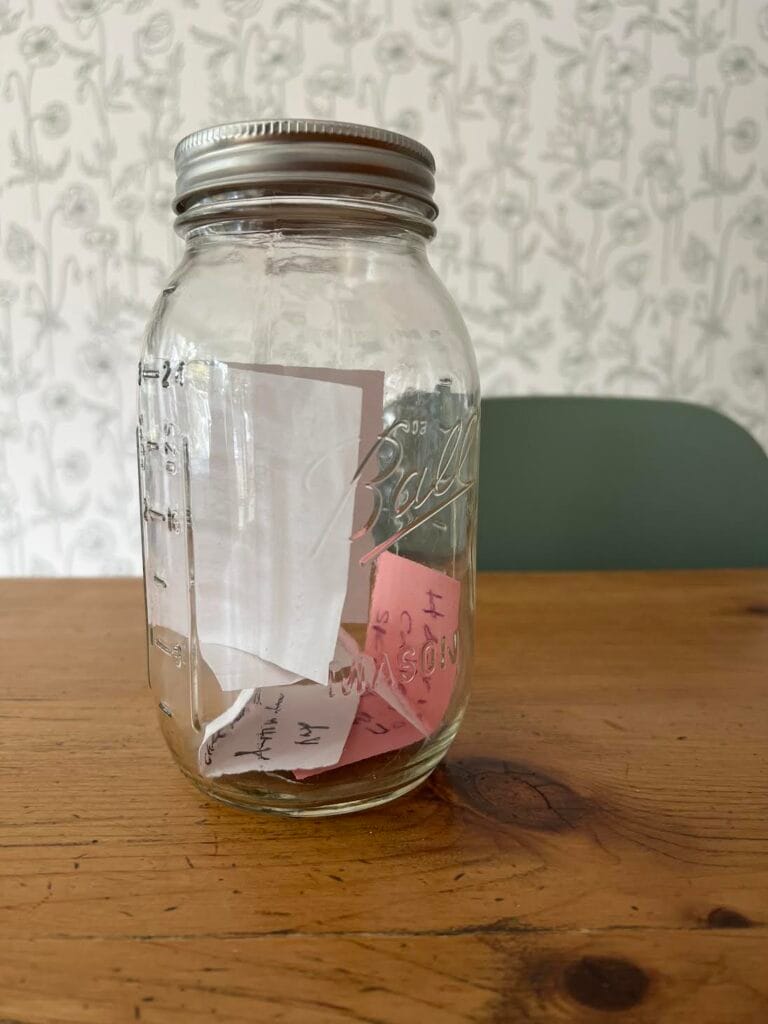
Filling a kindness jar with children’s words and actions is a tangible way for grown-ups to express and model gratitude. “I use [one] to highlight self-motivated moments of kindness,” explains Drew Kramer, a Mamaroneck, New York mom-of-two and creator of Lady & the Floofs, a new venture that offers mealtime stories and food play to kids. “When they happen, I write a note about whatever [my children] did and place it in the jar.” These acts range from one of her sons thanking her for making him noodles to her other son including his brother when playing with friends. “They like me to read from the jar from time to time,” adds Kramer, who says she is then able to acknowledge and express appreciation for her kids’ contributions to the family.
3. Ask meaningful questions about everyday situations
Gratitude, Tangeman explains, is “the appreciation people feel when somebody has done something kind or helpful for them, or when they recognize the good things and people they have in their lives.” So swap that general “tell me about your day” prompt at pickup with ones that open young children’s eyes to other people’s caring words and actions. “It’s more about asking specific questions,” says Tangeman, “like: ‘Did somebody do something kind for you today? How did that make you feel?’”
“You’re building on this thought of kindness [and] kind behaviors and then building on their theory of mind,” suggests Tangeman, which she explains as the process of learning that other people have “beliefs, desires and tensions, emotions and thoughts that are different from ourselves.” In other words, she says that in order to express heartfelt gratitude for someone else, it’s necessary to first understand another person’s perspective.
4. Read stories that spark lessons in gratitude
Tangeman says books are one of her favorite ways to teach children about gratitude — and not just books that contain the actual word but ones that contain components of the concept, such as: “giving thanks, sharing gratitude stories, providing caring intentions, providing acts of kindness, talking about what friends do and expressing appreciation.”
A few helpful books Tangeman suggests include:
- “Bear Says Thanks” by Karma Wilson: “This book talks about this sense of thankfulness.”
- “Miss Tizzy” by Liba Moore Grey: “This book talks specifically about acts of kindness for others.”
- “Splat Says Thank You!” by Rob Scott: “This talks about the virtuous cycles of gratitude.”
Kramer adds these book recommendations to open a dialogue about gratitude:
- “The Thankful Book” by Todd Parr.
- “Frederick” by Leo Lionni (about a mouse who helps his friends get through the winter with comforting words).
5. Use art as a conversation starter
Breaking out the art supplies during some at-home downtime and asking kids to draw someone from their classroom or one of their friends who showed them friendship or caring, Tangemen suggests, is an actionable way to open a conversation about what these feelings mean to them.
“Art is a form of expression and children are natural storytellers,” adds Soriano. “Creating can allow a concrete touchpoint to talk about their feelings — in this case, what they are grateful for.”
“Art is a form of expression and children are natural storytellers. Creating can allow a concrete touchpoint to talk about their feelings — in this case, what they are grateful for.”
—Christina Soriano, educator and parent
6. Craft a thankful tree
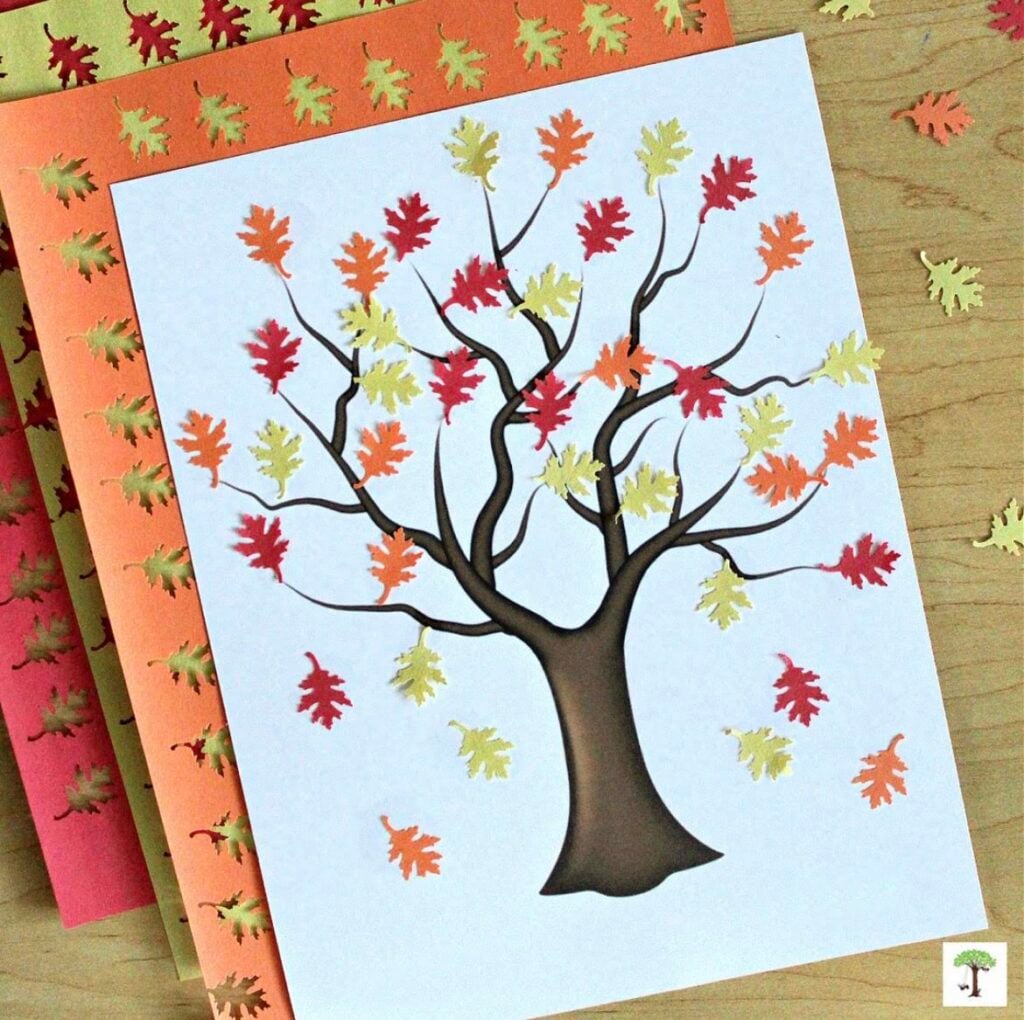
This thankful tree activity from Nell at Rhythms of Play helps even young children identify the people, places, things and feelings they are thankful for — and why. Download this printable tree template (for just a few bucks) or encourage kids to design their own tree and leaf cutouts with construction paper. Create one as a family — to which each person contributes individual “leaves” to adorn the branches, or have older children work independently.
“It’s meaningful to discuss that we can be grateful for easily overlooked everyday things — like a favorite song or book, water, fresh fruit, our favorite weather — things that aren’t necessarily tied to big ticket material objects,” emphasizes Soriano, who categorizes true gratitude as a spirit or demeanor and not just a single expression.
7. Keep a gratitude journal
New York City mom Carine Vinett encourages her 8-year-old daughter to express gratitude and appreciate everyday moments with daily entries in a journal. “We journal after dinner, and it just takes a few minutes,” explains Vinett, who purchased one with specific prompts. “She has to list three things she’s thankful for, name a person who brought her joy that day, circle her mood and draw or write about the best part of her day.” Added bonus: “It’s been a great bonding experience and way to connect after a busy day.”
8. Write thank-you notes
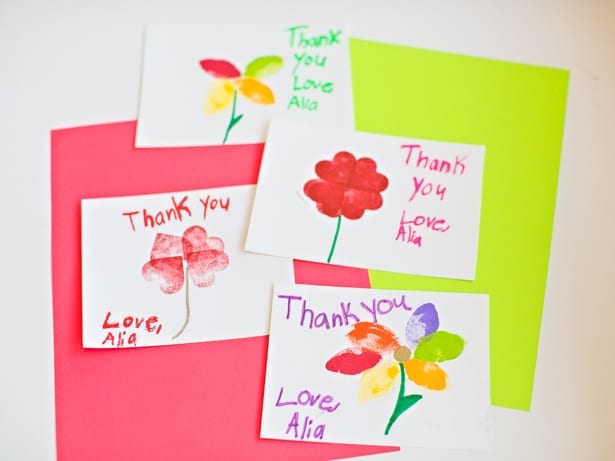
Shira Newman, an Ardsley, New York mom-of-two and licensed mental health counselor, has encouraged her children to write thank-you notes from an early age — even if at first that meant them adding a drawing or writing their name on a thank-you card that she wrote and read out loud. “By teaching our kids to express their thanks for others’ generosity in the form of a thank-you note, they can, over time, become more inherently grateful and appreciative of the way their lives are each and every day,” shares Newman.
If young kids want to take the reins on their thank-you cards, grown-ups can help them follow these simple instructions from Hello, Wonderful. With a stamp and stamp pad, markers and some thick paper (to absorb the ink), kids can beautifully express gratitude for gifts and actions in their own way.
9. Teach the kindness of giving
In order to encourage her young boys to recognize what they have in their lives, Kramer has them help pack food to share with those who have less — while Newman has her kids give whatever loose change they collect throughout the year to a charity of their choice.
“By having our kids maintain a tzedakah box [used in Jewish tradition to collect money for charity] and contributing to it regularly, our children are reminded of what it means to feel grateful and the joy that can be found by giving and not only receiving,” explains Newman. “We would like our kids to be grateful for what they have and what they are given and to be able to recognize and act when others need help to make things more equitable and fair.”
10. Find beauty all around you
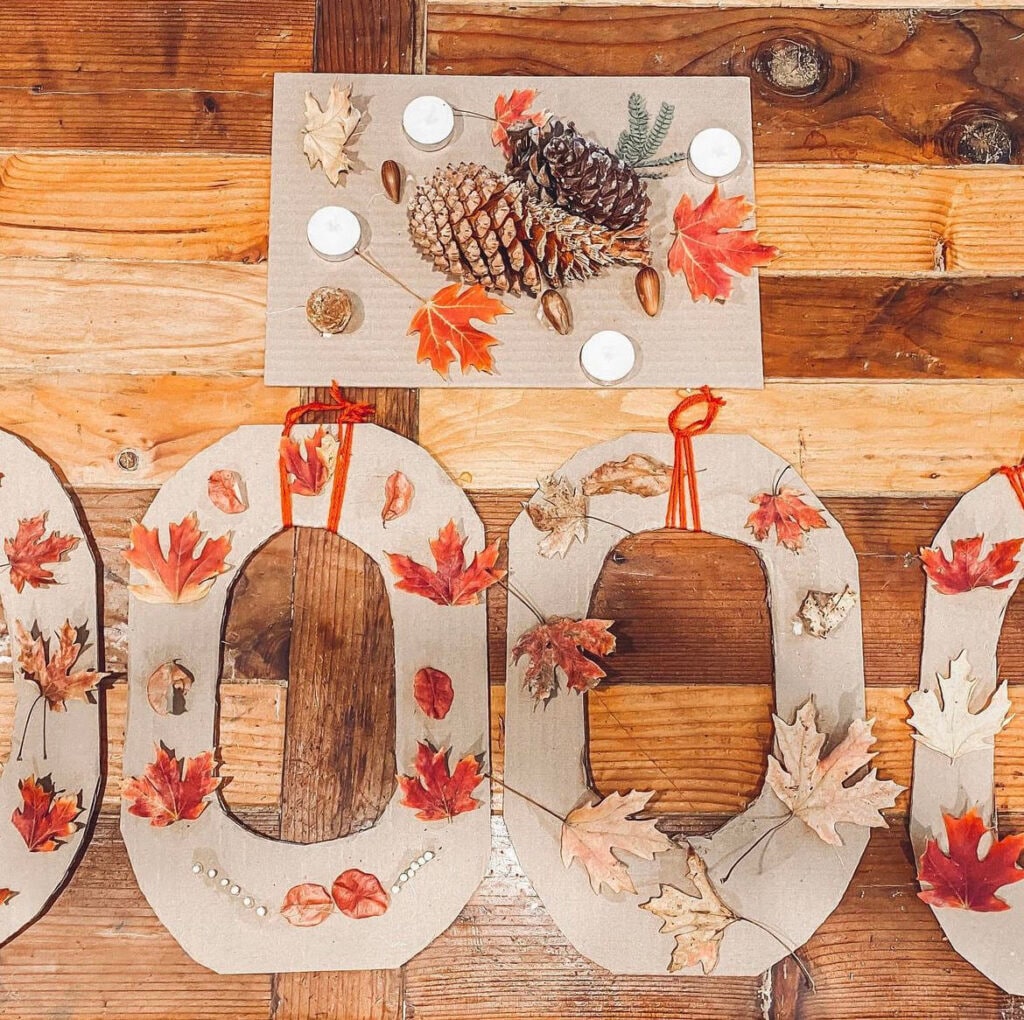
Building gratitude or a deep appreciation for the world around us, notes Tangeman, often begins with mindfulness, which can be taught by prompting children to use their senses to see, hear, smell and touch their surroundings while, say, going on a nature walk.
This nature gratitude wreath activity from With Love, Ima builds on this idea by asking kids to collect fallen leaves, acorns, pine cones and sticks and arrange them into seasonal wreaths. Not only is this a wonderful sensory experience, but it also might prompt a discussion about giving thanks for what nature provides. Kids may decide to gift their final wreath, too, and can then enjoy how giving makes both them and the recipient feel.
11. Practice what you preach
Before teaching kids about gratitude, Tangeman notes that it is important for grown-ups to check in with themselves:
- Ask how you already engage with the world and express gratitude for yourself and others.
- Recognize your own feelings when trying to teach gratitude, being careful not to react in a moment of frustration when a child’s actions or words may, for instance, be more entitled than gracious.
- Avoid an emphasis on “please” and “thank you” without meaning behind them, as Tangeman adds, “Focusing on forcing your child to be grateful by saying thank you can potentially decrease that intrinsic motivation to be grateful.”
After all, it’s that intrinsic motivation that is so important because, according to Tangeman, research shows that expressing gratitude can improve school satisfaction, academic performance, relationships and social success. Simply put, it makes us and those around us happier people — which is something we can all be grateful for.
